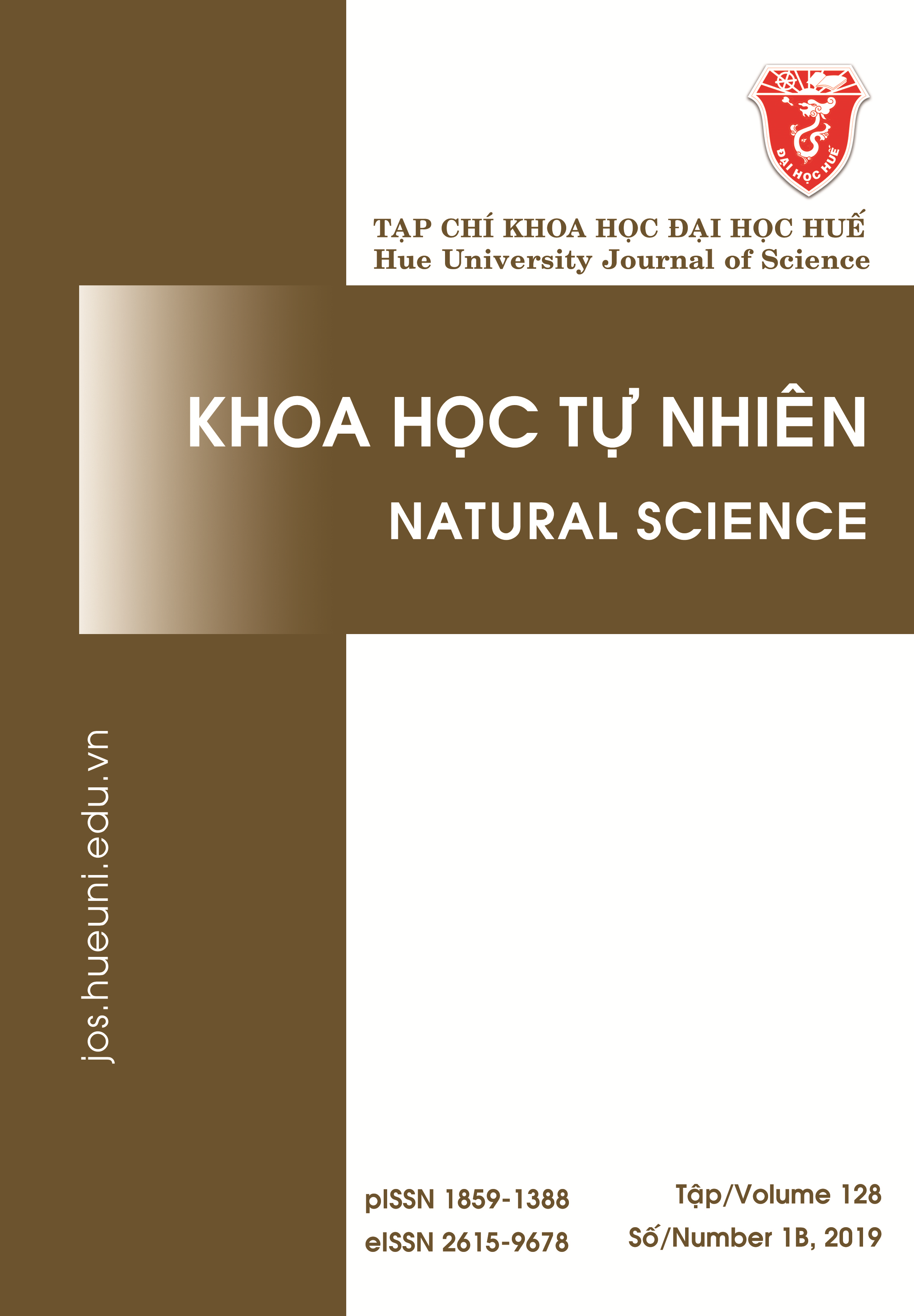Abstract
High-performance liquid chromatography coupled with a photodiode array detector (HPLC- DAD) has been reported to quantify isolated compounds. This work was designed, therefore, to develop an HPLC-DAD system to determine luteolin in the extract solutions from Helicteres hirsuta. Luteolin was analyzed on an RP-C18 column using a mobile phase including acetonitrile – 0.1% phosphoric acid (v/v) = 1:1 (v/v) with a detecting wavelength of 347 nm, a flow rate of 0.5 mL/min, and a volume of an injected sample of 10 μL. The HPLC system was carried out at ambient temperature. The method shows linearity for luteolin in the range 0.02–1 mg/mL, and the recovery of luteolin is 94.07 ± 0.64 %. This is the first time, the contents of luteolin in methanol extracts from the plant parts of H. hirsuta (including branch, fruit, and aerial parts) were determined with a value of 49.06 ± 0.46, 56.61 ± 0.62 and 91.15 ± .42 µg/g, respectively.
References
- Chuakul W, Saralamp P, Boonpleng A. Medicinal plants used in the Kutchum district, Yasothon Province, Thailand. 2002.
- Chin Y, Jones WP, Rachman I, Riswan S, Kardono LB, Chai H, Farnsworth NR, Cordell GA, Swanson SM, Cassady JM, Kinghorn AD. Cytotoxic lignans from the stems ofHelicteres hirsuta collected in indonesia. Phytotherapy Research. 2006 01;20(1):62-65.
- Libman, A., Bouamanivong, S., Southavong, B., Sydara, K., & Soejarto, D. D. Medicinal plants: an important asset to health care in a region of Central Laos. Journal of Ethnopharmacology, 2006;106(3):303-311.
- Pham, H. N. T., Nguyen, V. T., Vuong, Q. V., Bowyer, M. C., & Scarlett, C. J. Effect of extraction solvents and drying methods on the physicochemical and antioxidant properties of Helicteres hirsuta Lour. leaves. Technologies, 2015;3(4):285-301.
- Pham, H. N. T., Vuong, Q. V., Bowyer, M. C., & Scarlett, C. J.. Optimum conventional extraction conditions for phenolics, flavonoids, and antioxidant capacity of Helicteres hirsuta Lour. Asia‐Pacific Journal of Chemical Engineering, 2017; 12(2):332-347.
- Survey of characteristics and chemical components of diethyl ether from Helicteres hirsuta lour., Malvaceae, Training and scientific research in the Mekong Delta towards integration and sustainable development, 2016:40-50.
- Gökbulut, A., SatilmiŞ, B., Batçioğlu, K., Çetin, B., & Şarer, E.. Antioxidant activity and luteolin content of Marchantia polymorpha L. Turkish Journal of Biology, 2012;36(4):381-385.
- Dong, H., Yang, X., He, J., Cai, S., Xiao, K., & Zhu, L.. Enhanced antioxidant activity, antibacterial activity and hypoglycemic effect of luteolin by complexation with manganese (II) and its inhibition kinetics on xanthine oxidase. RSC Advances, 2017;7(84):53385-53395.
- Kang, K. A., Piao, M. J., Ryu, Y. S., Hyun, Y. J., Park, J. E., Shilnikova, K., ... & Hyun, J. W.. Luteolin induces apoptotic cell death via antioxidant activity in human colon cancer cells. International journal of oncology, 2017;51(4):1169-1178.
- Durucasu, I., & Tokusoglu, O.. Effects of grilling on luteolin (3, 4, 5, 7-tetrahydroxyflavone) content in sweet green bell pepper (capsicum annuum). Pakistan Journal of Biological Sciences, 2007;10(19):3410-3414.
- Miean, K. H., & Mohamed, S.. Flavonoid (myricetin, quercetin, kaempferol, luteolin, and apigenin) content of edible tropical plants. Journal of agricultural and food chemistry, 2001;49(6):3106-3112.
- Cao, J., Chen, W., Zhang, Y., Zhang, Y., & Zhao, X.. Content of selected flavonoids in 100 edible vegetables and fruits. Food science and technology research, 2010;16(5):395-402.

This work is licensed under a Creative Commons Attribution-ShareAlike 4.0 International License.
Copyright (c) 2019 Array




